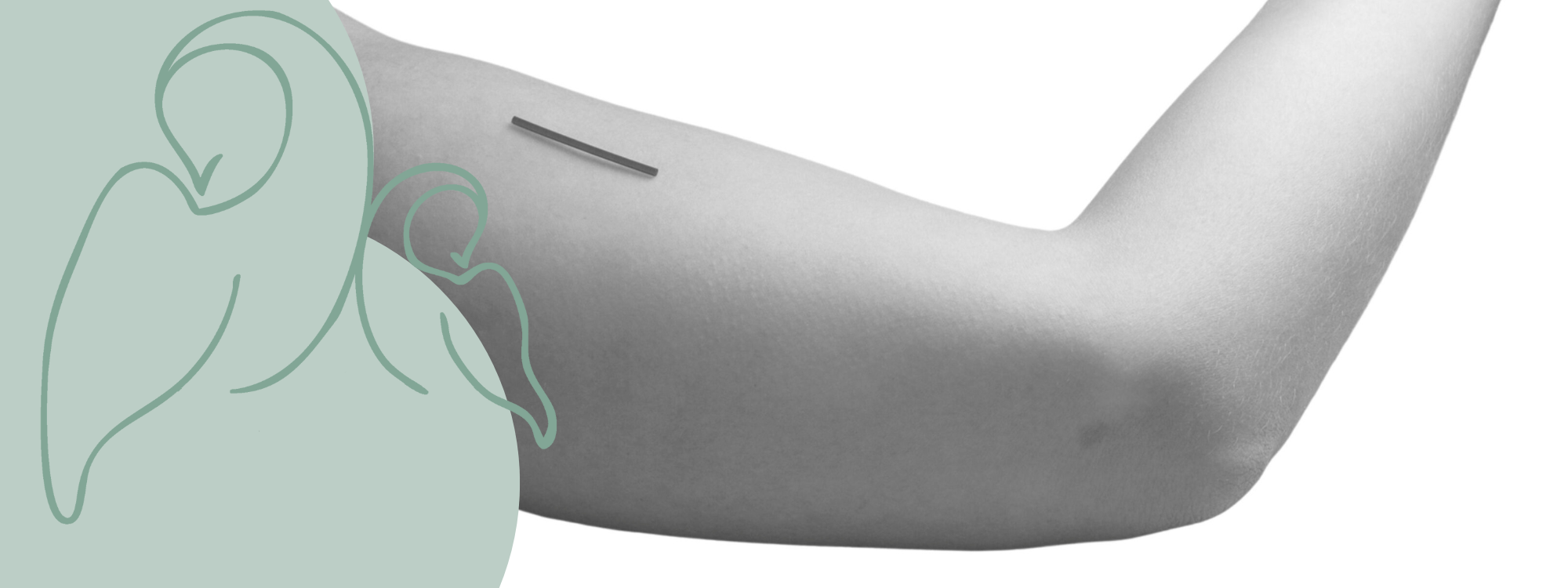
Implanon
The Implanon, also known as the Hormone Rod, is about the size of a matchstick, it is 40mm long and 2mm in diameter. The Implanon is inserted by a doctor or midwife in the upper arm, just under the skin, and is effective for 2 to 3 years. Earlier removal, for example in the event of complaints or a pregnancy wish, is always possible. Implanon contains one type of hormone, progestogen.
The effect of this is that ovulation is inhibited and the mucus in the cervix becomes difficult for sperm cells to penetrate. In addition, progestin changes the endometrium in such a way that the uterus is unsuitable for pregnancy.
During the first three months after Implanon insertion, irregular bleeding, usually small amounts, may occur, also known as 'spotting'. After three to six months this is over and bleeding only occasionally occurs or the blood loss stops completely, this does not hurt.
Reliability
The Implanon is one of the most reliable contraceptive methods available in the Netherlands. The pregnancy rate is theoretically 0. This means that if a group of 1000 women uses Implanon as contraception for a year, no one will get pregnant. In practice, 3 in 1000 women will become pregnant due to incorrect placement of the swab.
If the Implanon is placed during a menstrual period, it is immediately reliable. If the Implanon is not placed during a menstrual period, it is necessary to use an additional method of contraception for seven days.
Use
The insertion of the hormone rod is done by the obstetrician, general practitioner or gynecologist using a specially designed device in which the rod is placed in a needle. Implanon is inserted just under the skin between two muscles in the upper arm. Before the swab is placed, the skin is first anesthetized, so you hardly feel anything of the insertion.
When to start Implanon after childbirth?
If you are breastfeeding, Implanon can be inserted three to four weeks after delivery. If you are not breast-feeding, the swab can in principle be inserted immediately after delivery. You determine the exact time in consultation with your midwife/GP/gynaecologist.
Advantages
- You only have to think about contraception once every three years.
- Is very reliable.
- Relatively few hormones.
- Menstruation actually always decreases in amount, duration, frequency and pain.
- May be used during breastfeeding.
- When the Implanon is removed, you are fertile again after 1-2 weeks.
Cons
- The placement and removal of the Implanon is done by a midwife or doctor.
- Unpredictable and irregular bleeding can occur.
- In the first weeks after inserting the rod, headache symptoms may arise that will go away on their own.
- Does not protect against STDs (sexually transmitted diseases).
- Some medicines affect the effect of the Implanon (including medicines against epilepsy and tuberculosis and a number of sleeping and sedatives).
